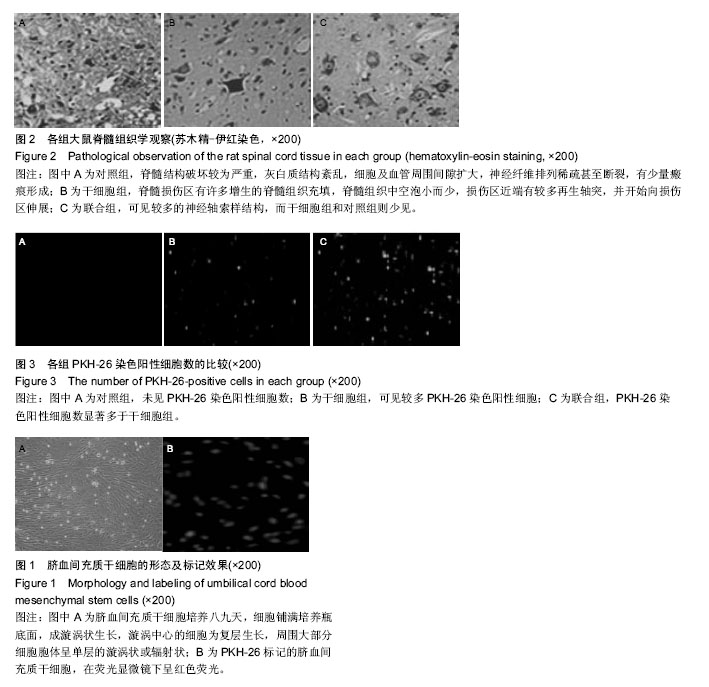| [1] Monti MM,Lutkenhoff ES,Rubinov M,et al.Dynamic change of global and local information processing in propofol-induced loss and recovery of consciousness. PLoS Comput Biol.2013;9(10): e1003271.
[2] Guan D,Chen Z,Huang C,et al.Attachment, proliferation and differentiation of UCMSCs on gas-jet/electrospun nHAP/PHB fibrous scaffolds.Appl Surf Sci.2008;255(2):324-327.
[3] Jiang X,Ai C,Shi E,et al.Neuroprotection against spinal cord ischemia-reperfusion injury induced by different ischemic postconditioning methods: roles of phosphatidylinositol 3-kinase-Akt and extracellular signal-regulated kinase. Anesthesiology. 2009;111(6): 1197-1205.
[4] Xiang SY, Dusaban SS, Brown JH, et al. Lysophospholipid receptor activation of RhoA and lipid signaling pathways.Biochim Biophys Acta.2013; 1831(1): 213-222.
[5] 许霁虹,张铁铮,刘晓江,等.不同剂量丙泊酚对老年患者心血管功能的影响[J].临床麻醉学杂志,2004,20(8): 451-452.
[6] Li CH,Lee RP,Lin YL,et al.The treatment of propofol induced the TGF-β1 expression in human endothelial cells to suppress endocytosis activities of monocytes. Cytokine.2010;52(3):203-209.
[7] Wang HY,Wang GL,Yu YH,et al.The role of phosphoinositide-3-kinase/Akt pathway in propofol-induced postconditioning against focal cerebral ischemia-reperfusion injury in rats.Brain Res. 2009;1297(10):177-184.
[8] Chen LJ,Sun BH,Qu JP,et al.Avermectin induced inflammation damage in king pigeon brain. Chemosphere. 2013;93(10):2528-2534.
[9] Wang ZZ,Yong JH.Texture analysis and classification with linear regression model based on wavelet transtorm.IEEE Trans Image Process. 2008; 17(8): 1421-1430.
[10] Brambilla R, Bracchi-Ricard V,Hu WH, et al.Inhibition of astroglial nuclear factor κB reduces inflammation and improves functional recovery after spinal cord injury.J Exp Med,2005;202(1):145-156.
[11] Dosenko VE,Nagibin VS,Tumanovskaya LV,et al. Postconditioning prevents apoptotic necrotic and autophagic cardiomyocyte cell death in culture.Fiziol Zh.2005; 51(3):12-17.
[12] 蒋松鹤,林海燕,何蓉.督脉、夹脊电针对脊髓损伤大鼠功能康复的影响[J].中华针灸电子杂志,2015,4(1):7-12.
[13] 訾英,范广宇,朱悦.脊髓干细胞移植对脊髓损伤后神经功能的影响[J].中华实验外科杂志,2006,23(10): 1257-1258.
[14] Adembri C,Venturi L,Tani A,et al.Neuroprotective effects of propofol in models of cerebral ischemia: inhibition of mitochondrial swelling as a possible mechanism.Anesthesiology.2006;104(1):80-89.
[15] 余奇劲,杨洁,陈娟.缺学前和缺血后联合应用丙泊酚对兔脊髓缺血再灌注损伤的保护作用[J].中华临床医师杂志, 2011,5(20):5955-5959.
[16] 冯玉,白文芳,许伟成,等.低频电磁场促进脐血间充质干细胞移植修复大鼠脊髓损伤的实验研究[J].中国组织工程研究,2013,17(32):5819-5826.
[17] Morizane K,Ogata T,Morino T,et al.A novel thermoelectric cooling device using Peltier modules for inducing local hypothermia of the spinal cord: The effect of local electrically controlled cooling for the treatment of spinal cord injuries in conscious rats. Neurosci Res.2012;72(3):279-282.
[18] Zhou YJ,Liu JM,Wei SM,et al.Propofol promotes spinal cord injury repair by bone marrow mesenchymal stem cell transplantation. Neural Regen Res. 2015;10 (8): 1305-1311
[19] Miyanji F,Furlan JC,Aarabi B,et al.Acute cervical traumatic spinal cord injury: MR imaging findings correlated with neurologic outcome--prospective study with 100 consecutive patients. Radiology. 2007; 243(3): 820-827.
[20] Kahn RA,Stone ME,Moskowitz DM.Anesthetic consideration for descending thoracic aortic aneurysm repair. Vasc Anesth.2007;11(3):205-223.
[21] 刘鲲鹏,廖旭,薛富善,等.舒芬太尼的药理学和临床应用[J].药物临床与应用,2005,7(6):454-457.
[22] 谢丽萍,代志刚,王胜,等.舒芬太尼预处理在大鼠肝缺血再灌注损伤中的作用及其与p28 MAKP关系的研究[J].重庆医学,2014,43(23):3037-3039.
[23] 刘鲲鹏,孙海涛,薛富善,等.不同剂量舒芬太尼预处理对大鼠的延迟性心肌保护作用[J].中华麻醉学杂志,2009, 29(5):405-408.
[24] 李进,袁世荧,丰新民,等.舒芬太尼延迟预处理对兔心肌缺血再灌注损伤的影响[J]中麻醉学杂志,2009,29(8): 692-695.
[25] 孙海涛,薛富善,刘鲲鹏,等.COX-2和mito-KATP通道在舒芬太尼预处理对心肌缺血再灌注大鼠延迟性心肌保护中的作用[J].中华麻醉学杂志,2010,30(4):456-460.
[26] Park DY, Mayle RE, Smith RL, et al.Combined Transplantation of Human Neuronal and Mesenchymal Stem Cells following Spinal Cord Injury.Global Spine J.2013;3(1):1-6.
[27] Cui X,Chen L,Ren Y,et al.Genetic modification of mesenchymal stem cells in spinal cord injury repair strategies.Biosci Trends.2013;7(5):202-208.
[28] 刘艳.瑞舒芬太尼和丙泊酚在脊柱侧凸矫正术唤醒试验中的应用[J].中国医师进修杂志, 2009,32(9):43-44.
[29] Duan DP,Su Q,Hu W,et al.Analysis of chronergy for treatment of spinal cord injury with the allogeneic bone mesenchymal stem cells (UCMSCs) transplantation in rats.Zhongguo Gu Shang.2013;26(10):845-849.
[30] Oliveri RS,Bello S,Biering-Sørensen F.Mesenchymal stem cells improve locomotor recovery in traumatic spinal cord injury: systematic review with meta-analyses of rat models.Neurobiol Dis.2014;62: 338-353.
[31] 王颖,王海云,王国林,等.丙泊酚后处理对大鼠脑缺血性损伤的保护作用[J].天津医科大学学报,2009,15(3): 376-378. |
.jpg)


.jpg)